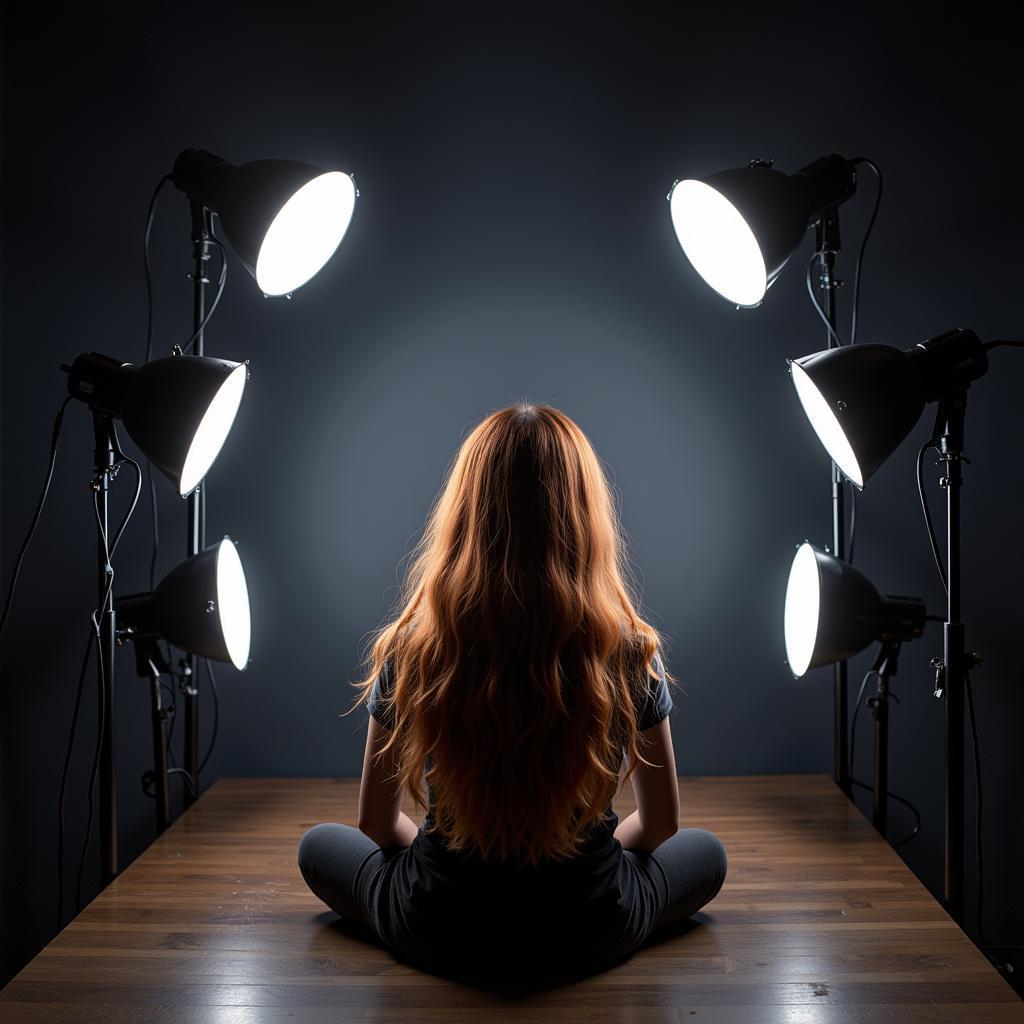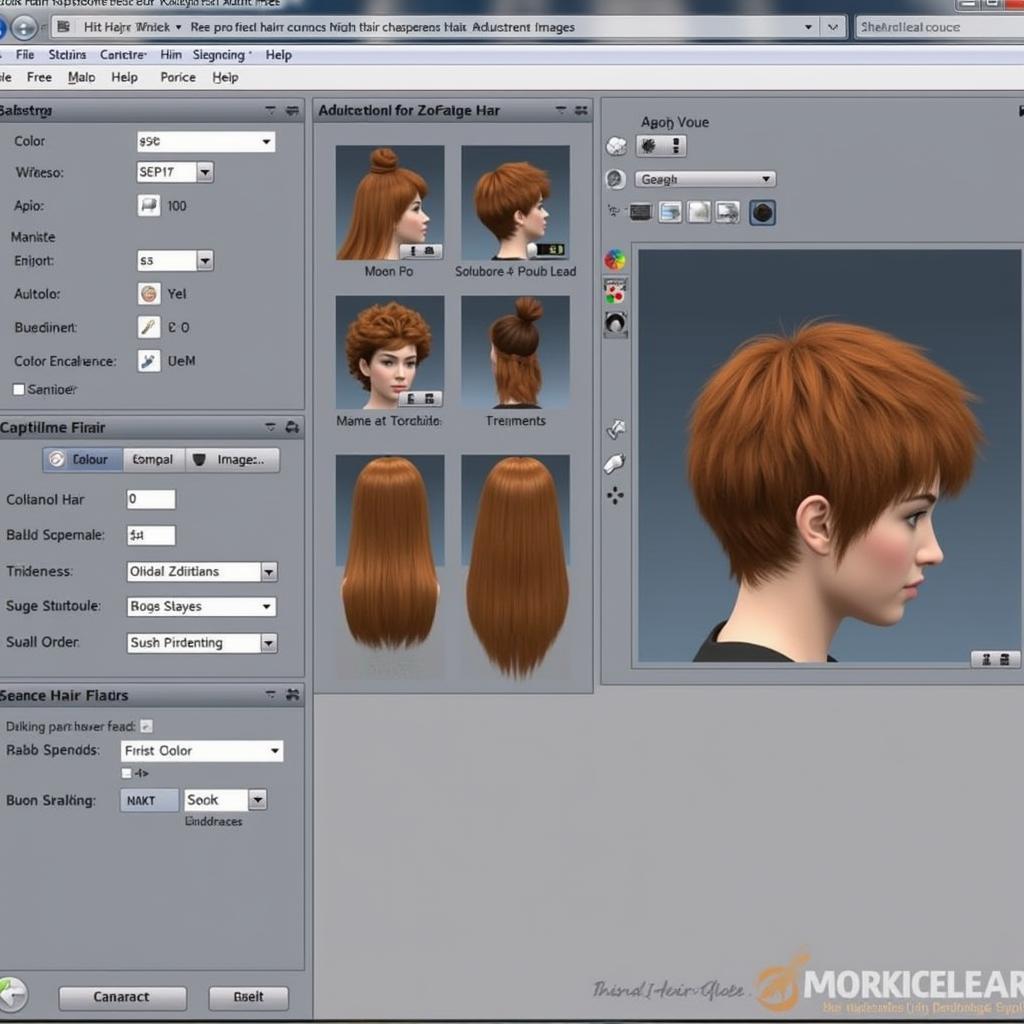Image-Based Hair Capture by Inverse Lighting
October 30, 2024Image-based Hair Capture By Inverse Lighting offers a groundbreaking approach to realistically recreating human hair in digital environments. This technique involves illuminating hair from various angles and capturing the resulting light interactions, then using inverse rendering algorithms to infer the underlying hair structure and properties. This information can then be used to create highly accurate and detailed digital hair models.
Understanding Image-Based Hair Capture
Image-based hair capture methods leverage photographs or video footage of real hair to generate digital representations. Instead of relying on manual modeling or simplifying assumptions, these techniques analyze the complex interaction of light with hair strands to deduce their shape, color, and other characteristics. This approach allows for greater realism and accuracy compared to traditional methods.
One of the key challenges in capturing hair digitally is its intricate structure and the way it scatters light. Individual strands are incredibly thin and densely packed, creating a complex interplay of light absorption, reflection, and transmission. Image-based methods tackle this complexity by analyzing patterns of light and shadow across the hair, effectively “reverse engineering” the hair’s 3D structure.
The Role of Inverse Lighting
Inverse lighting is a crucial component of image-based hair capture. This technique involves illuminating the hair from multiple known directions and capturing the resulting appearance. By carefully controlling the lighting setup and utilizing specialized algorithms, we can effectively reconstruct the 3D geometry and optical properties of individual hair strands. This process essentially inverts the traditional rendering process, where we would typically simulate light interacting with a known 3D model. Instead, we start with the observed appearance and work backward to deduce the underlying model.
Benefits of Using Inverse Lighting
Inverse lighting provides several advantages for hair capture:
- Accuracy: It allows for a highly accurate reconstruction of hair geometry and appearance.
- Realism: By capturing the subtle nuances of light interaction, inverse lighting enables the creation of highly realistic digital hair.
- Efficiency: Compared to manual modeling, image-based methods can significantly reduce the time and effort required to create complex hair models.
 Inverse Lighting Setup for Hair Capture
Inverse Lighting Setup for Hair Capture
Applications of Image-Based Hair Capture
This technology has a wide range of applications, including:
- Computer Graphics: Creating realistic hair for characters in movies, video games, and animations.
- Virtual Reality: Enhancing the realism and immersion of virtual environments.
- Fashion and Beauty: Simulating different hairstyles and hair colors for virtual try-on experiences.
- Medical Research: Studying hair growth, diseases, and the effects of treatments.
Advancements and Future Directions
Recent advancements in deep learning and computer vision are further improving the accuracy and efficiency of image-based hair capture. These techniques can learn complex relationships between lighting, hair structure, and appearance, enabling even more realistic and detailed reconstructions.
 Digital Hair Rendering Example
Digital Hair Rendering Example
“Image-based hair capture with inverse lighting is revolutionizing the way we create digital hair,” says Dr. Anya Sharma, a leading researcher in computer graphics. “This technology allows us to achieve unprecedented levels of realism and detail, opening up exciting new possibilities for various industries.”
Challenges and Limitations
While image-based hair capture offers significant advantages, some challenges remain:
- Computational Complexity: Processing large datasets of images and performing inverse rendering calculations can be computationally intensive.
- Data Acquisition: Capturing high-quality images with controlled lighting can be challenging, especially for complex hairstyles.
- Hair Dynamics: Accurately capturing the dynamic movement and behavior of hair remains an active area of research.
“Despite these challenges, the progress made in recent years is remarkable,” adds Dr. Michael Olsen, a computer vision expert. “We’re seeing significant improvements in both the accuracy and efficiency of these techniques, which will further expand their applicability.”
 Hair Capture Software Interface
Hair Capture Software Interface
Conclusion
Image-based hair capture by inverse lighting is a powerful technique that is transforming the creation of digital hair. By analyzing the interaction of light with hair, this method enables the generation of highly realistic and detailed hair models. While challenges remain, ongoing advancements are paving the way for even more sophisticated and accessible hair capture solutions in the future.
FAQ
- What is image-based hair capture?
- How does inverse lighting work in hair capture?
- What are the benefits of using inverse lighting for hair capture?
- What are the applications of image-based hair capture?
- What are the challenges and limitations of image-based hair capture?
- How is deep learning being used to improve hair capture?
- What is the future of image-based hair capture?
Common scenarios:
-
Creating realistic game characters: Game developers can use this technology to create lifelike hair for characters, increasing the visual fidelity of their games.
-
Virtual try-on experiences: Consumers can use augmented reality apps to visualize how different hairstyles and colors would look on them before visiting a salon.
Related Articles
You might also be interested in these articles:
- Advanced Lighting Techniques in Computer Graphics
- The Future of Virtual Reality and Augmented Reality
- Deep Learning Applications in Computer Vision
When you need help, please contact Phone Number: 0915117113, Email: [email protected] Or come to the address: Group 3, Binh An Hamlet, Phu Thuong, Vietnam, Binh Phuoc 830000, Vietnam. We have a 24/7 customer care team.